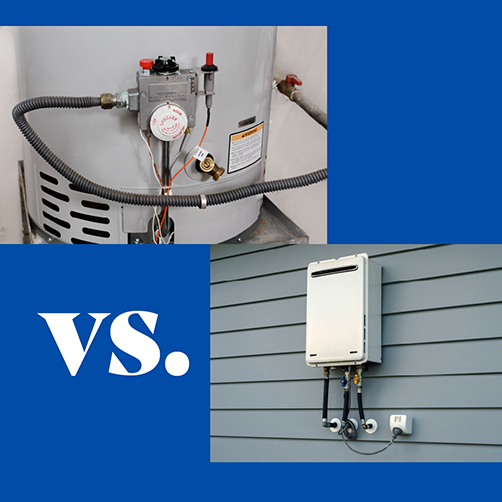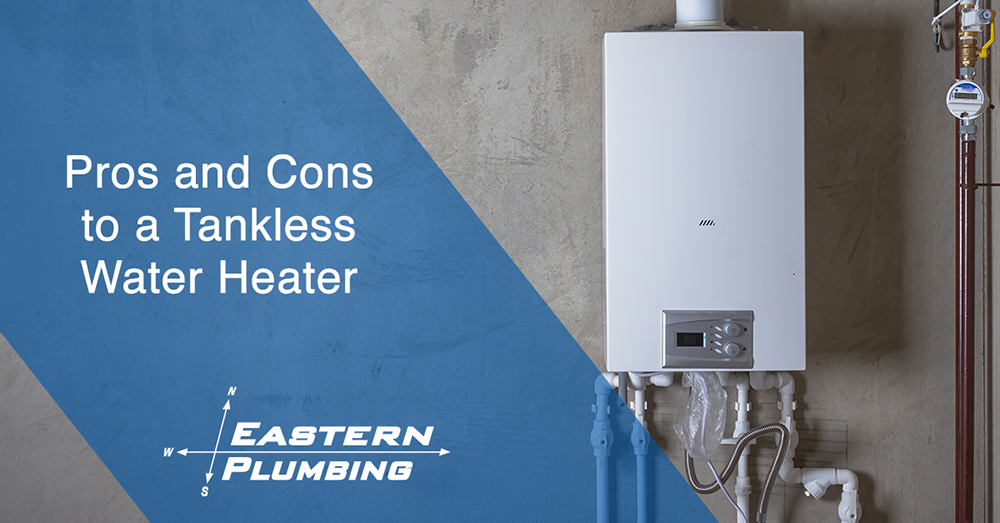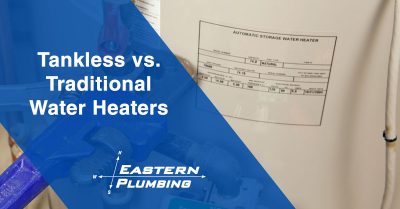Is it time for a new water heater? There are many perks to the newer, tankless water heaters, but the traditional systems have many benefits to rely on as well. We’ve broken down the pros and cons of both types, so you can make a decision based on your home and it’s needs!
Tankless Water Heater
A tankless water heater is powered by either electricity or gas, and is considered “on-demand”, meaning it only heats water as you need it. This type of water heater has no tank, and therefore does not store water. Instead, as soon as you cut your faucet on, the gas or electricity begins heating the water up.
Advantages
- Money and energy savings – Though it costs more to purchase and install, tankless water heaters usually have a 20+ year lifespan with the right maintenance. Homes with a tankless water heater can save anywhere from 8-50% more on energy bills than those that don’t because it only heats up water when you need it.
- Hot water at any time – With a tankless heater, you won’t long before your water turns hot.
- Less leaks and less maintenance – It is recommended that tankless systems be flushed every 2-4 years where traditional tank heaters should be done annually, Also, they are less likely to flood.
Disadvantages
- Installation Issues – If you are replacing a traditional water heater with a tankless one, it can take time and cost more due to having to relocate the pipes.
- May not meet demand – If you have many people in your home, a single tankless water heater may not provide your family with enough hot water.
Traditional Water Heater
A traditional water heater uses a storage tank that holds anywhere from 30-50 gallons of water. This type of system heats water and keeps it warm until you need it, ensuring a constant supply of hot water.
Advantages
- Cost – Traditional water heaters cost less to install than a tankless water heater, and repairs are cheaper and simpler to fix.
- Can accommodate more – Because the tank stores water and heats it, you have access to a larger amount of hot water, making it easy to run a shower, wash dishes, and do a load of laundry at the same time.
- Reliability – A traditional water heater is less likely to shut down or malfunction because it does not rely on complicated wiring and technology.
Disadvantages
- Energy bills – With a traditional water heater, the tank will heat and reheat all the water regardless of how much hot water you need. You may notice that this results in somewhat higher utility bills.
- Maintenance and Replacements –The tanks used in traditional water heaters must be drained every now and then to prevent sediment buildup and corrosion. Regular maintenance is required in order to keep your water heater running smoothly. These types of water heaters have a shorter lifespan, which means they need to be replaced more often.
Whether you know exactly what type of water heater you want, or you have questions about which one is right for you, Eastern Plumbing can help! Our staff is experienced and certified to help with any installation, maintenance, or repairs. Call the water heater experts today, 252-758-7579.








